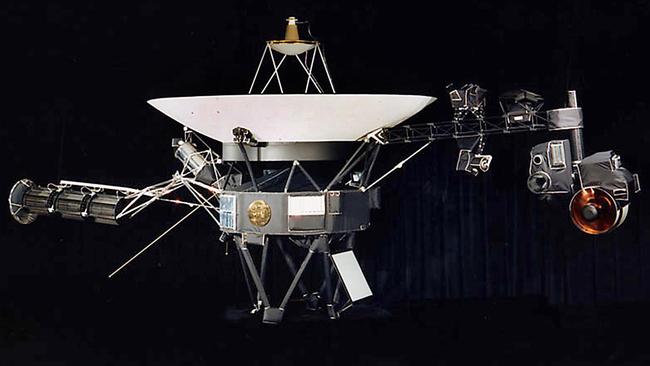Voyager 2 still on voyage of discovery after 42 years
Voyager 2, a small spacecraft 18 billion kilometres from home, discharged its final duty on Tuesday.

Voyager 2, a small spacecraft 18 billion kilometres from home, discharged its final duty from within its own solar system on Tuesday. Now all that is left for it is to witness the extinction of humanity.
As the data from the probe’s entry into interstellar space last year was published by scientists, they said the craft would probably outlast us all, orbiting for an eternity in the cold of the galaxy.
Unfortunately it will also probably stop sending back information to the humans who built it well before the next decade is out.
Just over 42 years ago two craft were launched 16 days apart on a mission to explore the further planets of our solar system. In 2012, decades after it had been expected to stop working, Voyager 1 passed through the edge of the solar system. Voyager 2 did the same last year.
Now in papers in the journal Nature, scientists have analysed the readings from its instruments, which were not designed to last this long. They provide unique information about the heliopause, a boundary that by some definitions marks the point at which the solar system meets interstellar space.
At the heliopause the hot solar winds from the sun hit the chilly blasts of long-exploded supernovae from the galaxy beyond. Passing through it at 15.4km a second, the probes were able to describe the furthest region yet reached by a machine built by humans.
The farthest known region of the solar system is a vast collection of comets and other space debris called the Oort cloud.
At its current speed, Voyager 1 won’t enter the Oort cloud for about 300 years and won’t leave the outer edge for 30,000 years or so, space agency scientists say.
Both Voyager probes are powered by plutonium-fuelled nuclear generators and are expected to keep their sensors operating for another five years or so, the scientists says. The Voyager probes contain a radioactive source that acts as a battery, and it is running down.
Even after they lose power, they will continue outward as ambassadors from the life forms of Earth. Each carries a gold-plated disc containing images of humankind and multicultural greetings in 55 languages. Sounds include laughter and a human heartbeat.
Bill Kurth, a research scientist at the University of Iowa and one of the authors of the studies, believes that both Voyagers “will outlast Earth”.
“They’re in their own orbits around the galaxy for five billion years or longer. And the probability of them running into anything is almost zero,’’ he said.
Ed Stone, from California University of Technology, was one of the original Voyager scientists.
“This has been a wonderful journey,” he said. “It began with the launch of two spacecraft in 77 to explore Jupiter and Saturn. Voyager 2 continued on to an encounter with Uranus, then Neptune in 1989. At that point the mission became the Voyager interstellar mission.”
The Times, The Wall Street Journal


